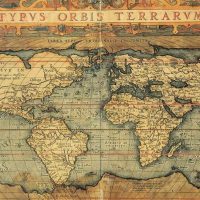Category: Essay Examples
Essay examples are of great value for students who want to complete their assignments timely and efficiently. If you are a student in the university, your first stop in the quest for research paper examples will be the campus library where you can get to view the sample essays of lecturers and other professionals in diverse fields plus those of fellow students who preceded you in the campus.
Browse Essay Examples:
Many college departments maintain libraries of previous student work, including essays, which current students can examine. This collection of free essay examples is our attempt to provide high quality samples of different types of essays on a variety of topics for your study and inspiration.
The Minoan civilization has its roots on the island of Crete in the Mediterranean Sea during the Neolithic Period (7000–3000 b.c.e.). The original inhabitants most likely emigrated from Asia Minor, which had already developed cities and conducted trade by 2000 b.c.e. The Greek poet Homer refers to the …
When Palestinian society emerged from the turbulence of the two Jewish revolts against the Romans at the end of the second century c.e., rabbis united to promote a religious document called the Mishnah. The Mishnah and its subsidiary books, commonly called the Tosefta and the Talmud, serve Judaism …
The kingdom of Mittani was an impressive IndoEuropean empire that ruled over northern Mesopotamia, or the Fertile Crescent, during the 15th and 14th century’s b.c.e. At its height the geographical region of Mittani stretched from the ancient city of Nuzi and the Tigris River in the east to …
Mohenjo-Daro and Harappa are two ancient cities located on the banks of the Indus and its tributary the Ravi River in the northwestern region of the Indian subcontinent. They represent the earliest civilization in the region, called the Indus, or Harappan, civilization, dating to approximately 2500–1500 b.c.e. Excavation …
The English word monasticism derives from the Greek word monos, meaning “alone.” Those who rejected the world to embrace the worship of God and obedience to his commandments without compromise were soon grouped into a communal residence, called in Greek monasterion, and later in English monastery; the inhabitant …
If Abraham symbolizes the beginning of Israel through a covenant between the God of the Bible and Abraham’s descendants, then Moses symbolizes a second beginning for Israel through another covenant, more comprehensive and constitutional, between God and a coalition of Hebrew tribes. Moses is quite different from the …
Mozi, which means “Master Mo,” began a Chinese school of philosophy called Moism. His personal name was Di (Ti). After studying under disciples of Confucius, he broke away and founded his own school of philosophy. During the era of the Hundred Schools of Philosophy Moism was a significant …
Mycenae is an ancient city-state located in Greece on the Peloponnese Peninsula, upon a hilltop on the lower slopes of the Euboea Mountains, between two of its peaks, on the road leading from the Argolic Gulf. This site has been inhabited since around 4000 b.c.e. in the Neolithic …
In the Greek and Roman worlds dissatisfaction with civic and public religion often gave rise to experimentation with foreign and secretive religions that promised better benefits to its devotees. The reason for the popularity is a matter of scholarly speculation. Perhaps the population displacements, the exposure to foreign …
The merchandise and produce that traversed the great deserts separating the Mediterranean from the Orient often were traded and carried by the Nabataeans. This lucrative commerce meant that their capital city, Petra, became an exotic and prosperous center of ancient civilization. The Nabataeans migrated as Arab wanderers from …
Native North American tribes had sets of beliefs describing the origin of Earth and the universe, the laws of that universe, how humans interacted with the rest of that universe, and the relationship between the physical world and the spiritual world. Prior to the incursion of Europeans, Natives …
Native Americans in North America had an enormous range of customs prior to the coming of Europeans. Their ancestors had first migrated into North America from Asia more than 10,000 years ago, hunting the huge herds of giant ice age mammals. As they spread throughout the continent, Native …
The reputation of Nebuchadnezzar II abounds in the ancient world, as he represents one of the most famous of the Near Eastern monarchs. No fewer than four books of the Jewish scriptures, 10 rabbinic commentaries, six books of the Pseudepigrapha and the apocrypha, several Arabic commentaries, and many …
The Neolithic age followed the Paleolithic age and Mesolithic (or Epipaleolithic) as the last era of the Stone Age of human prehistory. Homo sapiens (the modern human species) experienced the Neolithic age; late-surviving relatives such as Homo neanderthalensis and Homo floresiensis died off in the Upper Paleolithic. Its …
Neoplatonism is the modern name for the last school of pagan Greco-Roman philosophy. It flourished from 200 to 550 c.e., when its last teachers died; however, the influence of Neoplatonic doctrines continued in the teachings of Christian, Jewish, and Muslim philosophers. The influence of Neoplatonism in the Middle …
The fifth and final of the Julio-Claudian emperors, a dynasty founded by Augustus Caesar, Nero Claudius Drusus Germanicus reigned for the last 14 years of his life, succeeding his mother’s uncle Claudius. Although a patron of the arts, his reign is remembered as one indicative of the decadence …
Nestorius is the bishop associated with the Assyrian Church established in the realm of the Persian Sassanid Empire. Nestorius has been called a heretic, but most likely his theological rivals misunderstood him; moreover, he is sometimes viewed as the father of the Assyrian Church (Nestorian Church), but his …
New Comedy refers to ancient Greek theatrical comedies created and performed during the era in which the Macedonians ruled Greece—roughly 320–260 b.c.e. The revolutions in lifestyle of this period facilitated a change in entertainment. The characters in these comedies were typically drawn from the masses of everyday people, …
This era has been called “Egypt’s Empire,” when Egyptian armies reached and crossed the river Euphrates in the north and marched deep into Nubia. The rulers of the Eighteenth Dynasty (1550–1295 b.c.e.) pursued a policy of vigorous expansion, creating an empire that the pharaohs of the Nineteenth Dynasty …
Christianity in the early fourth century c.e. was a complex spectrum of beliefs, whose adherents were faced with the additional problem that their religion was illegal in the Roman Empire. Constantine the Great recognized Christianity as a legal religion in 313 c.e. in the Western Roman Empire. With …


